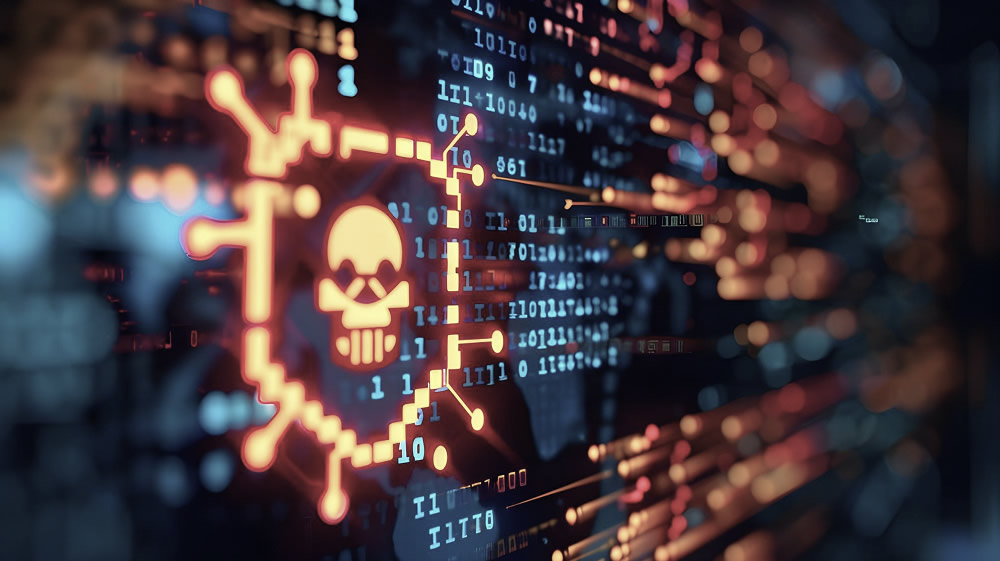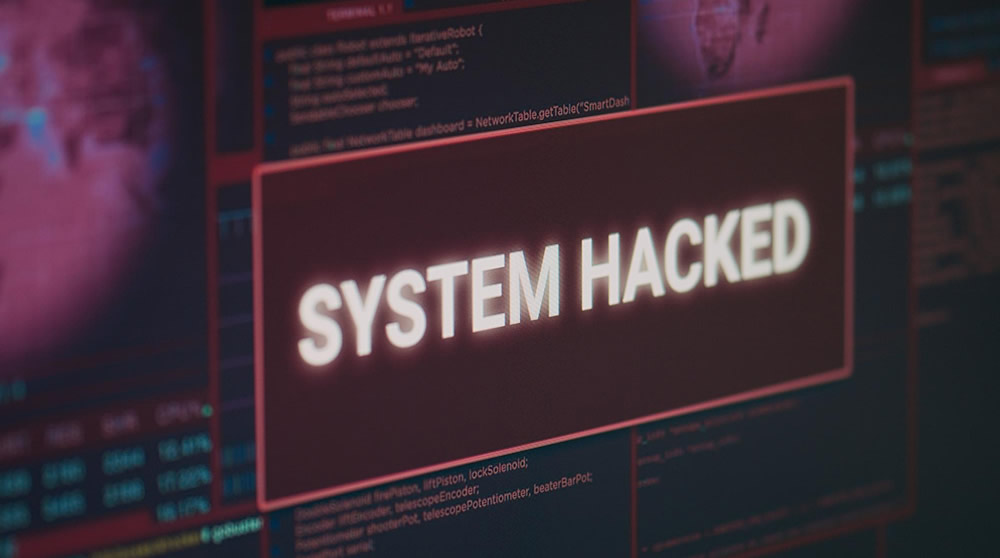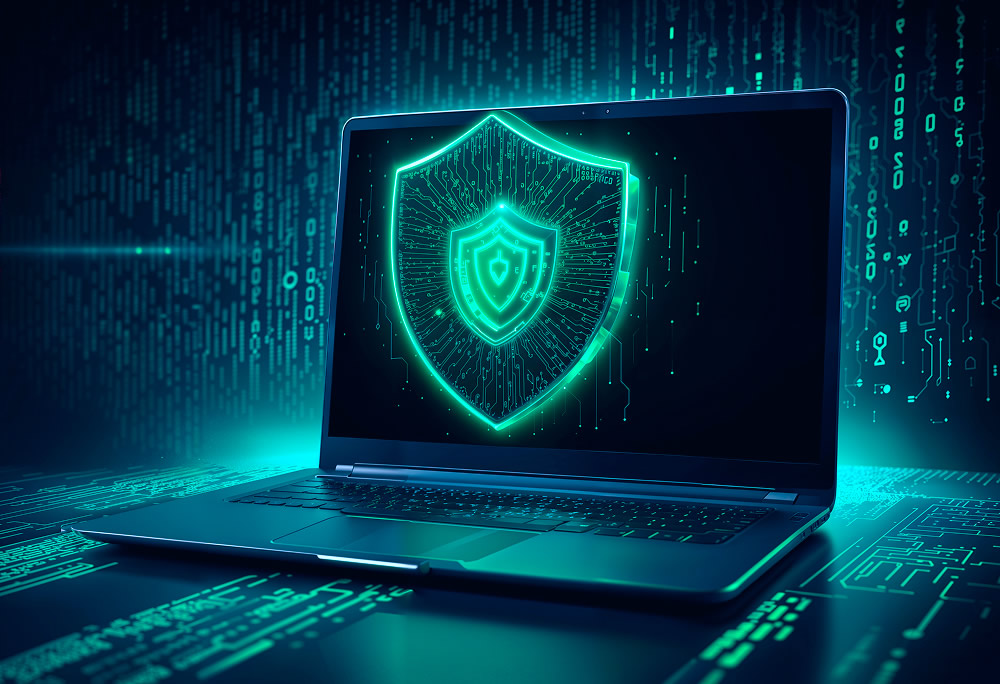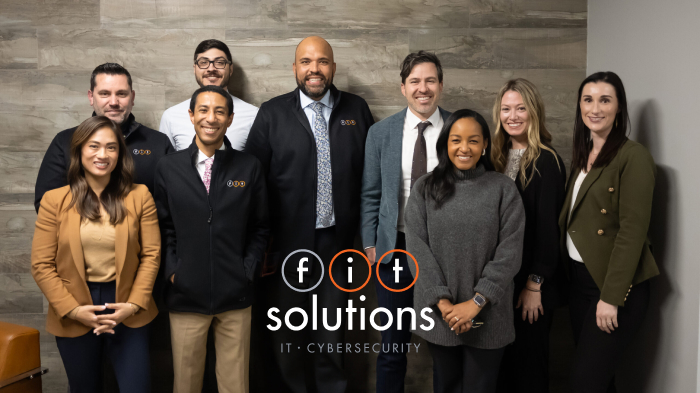Ransomware has emerged as one of the most devastating cybersecurity threats facing organizations worldwide. This malicious software, which encrypts valuable data and demands payment for its release, has evolved from simple encryption schemes to sophisticated attack vectors that can cripple entire business operations within minutes.
The statistics are sobering: ransomware attacks occur every 11 seconds, targeting organizations of all sizes across every industry. From healthcare providers to manufacturing facilities, educational institutions to government agencies, no sector remains immune to these attacks. The financial impact is equally staggering, with global ransomware damage costs projected to reach unprecedented levels.
In this article we’ll explore the complexities of ransomware attacks and recovery strategies, and you’ll discover why having a trusted partner like Fit Solutions can make the difference between a swift recovery and a prolonged crisis.
Table of Contents
- What is Ransomware Response and Recovery?
- How Do Ransomware Attacks Begin?
- What are the Signs of Ransomware?
- Do Ransomware Attacks Steal Data?
- How to Respond to a Ransomware Attack
- How Rare are Ransomware Attacks?
- What is the Average Cost of Ransomware?
- What Percentage of Ransomware Victims Get Their Data Back?
- Does Ransomware Go Away if You Pay?
- Conclusion
What is Ransomware Response and Recovery?

Ransomware response and recovery encompasses the comprehensive set of actions, protocols, and strategies organizations must implement when faced with a ransomware attack. At its core, it’s a structured approach to detecting, containing, eradicating, and recovering from ransomware incidents while minimizing data loss and operational disruption.
The recovery process begins the moment ransomware is detected within a system. Fit Solutions provides a comprehensive recovery solution that addresses both immediate threats and long-term security needs. An effective response requires immediate action across multiple fronts: isolating affected systems to prevent spread, preserving evidence for investigation, assessing the scope of encryption, and initiating business continuity procedures. This initial phase is crucial, as actions taken in the first hours can significantly impact the overall recovery outcome.
Recovery itself involves several key components:
- Identification and containment of the ransomware strain
- Assessment of encrypted data and system damage
- Implementation of recovery procedures from secure backups
- Restoration of critical business operations
- Post-incident analysis and security enhancement
Fit Solutions approaches ransomware recovery through a methodical, four-phase framework that has proven successful across numerous incidents. Our process begins with rapid incident assessment and containment, followed by sophisticated data recovery techniques that often succeed even without paying the ransom. The third phase focuses on system restoration and business continuity, while the final phase strengthens defenses against future attacks.
What sets Fit Solutions’ approach apart is their emphasis on parallel processing – working simultaneously on multiple recovery fronts while maintaining clear communication with stakeholders. Our team utilizes proprietary tools and techniques developed through years of handling diverse ransomware variants, enabling faster recovery times and higher success rates.
Most importantly, we understand that recovery isn’t just about decrypting files – it’s about restoring business operations while implementing stronger security measures to prevent future incidents. This holistic approach ensures organizations emerge from attacks more resilient than before.
Work with Our
24/7/365 Cyber Team
How Do Ransomware Attacks Begin?

Understanding how ransomware infiltrates systems is crucial for prevention and protection. While ransomware attacks have grown increasingly sophisticated, they typically begin through a few common entry points that organizations can monitor and defend against with proper vigilance and security measures.
Email phishing remains the primary source point for ransomware attacks, accounting for approximately 54% of all initial access points. Cybercriminals craft increasingly convincing emails that appear to come from legitimate sources – vendors, colleagues, or even executive leadership. These messages often create a sense of urgency, prompting recipients to click malicious links or download infected attachments without proper scrutiny. Even experienced professionals can fall victim to these sophisticated tactics.
Remote Desktop Protocol (RDP) exposure represents another significant entry point, where attackers target vulnerable computer systems through operating systems with exposed remote access capabilities. Threat actors scan the internet for exposed RDP ports, attempting to breach systems through weak passwords or unpatched vulnerabilities. The surge in remote work has made this attack method particularly attractive to cybercriminals, who exploit improperly secured remote access solutions.
Other common technical entry points include:
- Exploitation of unpatched software vulnerabilities
- Drive-by downloads from compromised websites
- Malvertising campaigns that redirect users to malicious sites
- Supply chain attacks through compromised third-party software
- Infected USB drives or external storage devices
Other tactics have also evolved beyond simple email phishing. Modern ransomware operators employ:
- Vishing (voice phishing) calls impersonating IT support
- Business Email Compromise (BEC) attacks targeting financial transactions
- Watering hole attacks that compromise legitimate websites
- Spear-phishing campaigns using detailed personal information
Many successful ransomware attacks combine multiple entry points. For example, an initial phishing email might harvest credentials, which attackers then use to access RDP services, creating multiple layers of compromise before deploying the ransomware payload.
Understanding the types of attacks possible is essential for developing effective defense strategies. Fit Solutions helps organizations implement comprehensive security measures that address both technical vulnerabilities and human factors, significantly reducing the risk of successful ransomware infiltration.
What are the Signs of Ransomware?

Detecting ransomware early can mean the difference between a minor security incident and a catastrophic system-wide encryption. Understanding the warning signs allows organizations to respond swiftly and potentially prevent full-scale attacks. Through years of incident response experience, Fit Solutions has identified key indicators that often precede or accompany ransomware attacks.
Early Warning Indicators:
- Unexpected antivirus or security software deactivation
- Suspicious network traffic patterns, especially during off-hours
- Unusual login attempts from unfamiliar locations
- Sudden changes in file extensions across multiple documents
- Mysterious processes running in Task Manager
- Email reports of failed delivery to addresses you never contacted
During an active ransomware attack, systems typically exhibit distinct symptoms that demand immediate attention. Files become inaccessible, with documents opening to display garbled text or failing to open altogether. Users might notice their cursor moving independently or commands executing without their input – signs that an attacker has gained remote access to the system.
Critical system behavior changes include:
- Dramatically slower system performance
- Encrypted files appearing with new extensions (like .encrypted, .locked, or .crypted)
- Ransom notes appearing on the desktop or as text files in multiple directories
- System restore points being deleted
- Unusually high CPU and disk activity
- Network connections to unknown IP addresses
- Disabled Windows Task Manager or Registry Editor
Fit Solutions emphasizes the importance of training employees to recognize these signs and establishing clear reporting protocols. Our monitoring systems can detect many of these indicators automatically, enabling rapid response before encryption completes. When organizations notice any combination of these warning signs, immediate isolation of affected systems and contacting cybersecurity experts can significantly improve recovery outcomes.
Ransomware variants constantly evolve, sometimes exhibiting new behaviors. Regular security updates and awareness training help teams stay current with the latest threat indicators.
Do Ransomware Attacks Steal Data?

Modern ransomware attacks have evolved far beyond simple encryption schemes. Today’s cybercriminals frequently employ double extortion tactics, where they not only encrypt an organization’s data but also exfiltrate sensitive information before encryption begins. This evolution has made ransomware incidents significantly more dangerous and complex to handle.
Double extortion represents a strategic shift in ransomware operations. Criminals realized that organizations with robust backup systems might resist paying for decryption keys alone. By stealing data before encryption, attackers gain additional leverage – threatening to publish sensitive information unless their demands are met. Over 70% of ransomware attacks now involve data theft, making this tactic the new norm rather than the exception.
The data exfiltration process typically occurs silently in the background, often days or weeks before the actual encryption phase begins. Attackers target:
- Customer personal information
- Financial records and transactions
- Intellectual property
- Employee data
- Healthcare records
- Confidential business contracts
- Source code and proprietary information
This stolen data creates cascading business impacts beyond the immediate operational disruption. Organizations face:
- Regulatory compliance violations and fines
- Mandatory breach notifications to affected parties
- Potential class-action lawsuits
- Reputational damage and loss of customer trust
- Competitive disadvantages if trade secrets are exposed
- Long-term financial consequences
Fit Solutions’ approach to ransomware recovery includes sophisticated data tracking tools that can identify what information attackers accessed and potentially exfiltrated. This intelligence proves crucial for compliance reporting and risk assessment. Our incident response teams work closely with legal and compliance experts to manage both the technical recovery and the broader implications of data theft.
To combat these evolved threats, organizations must implement robust data protection strategies that go beyond traditional backup systems. This includes data loss prevention tools, network segmentation, and continuous monitoring for suspicious data movements – all services that Fit Solutions integrates into our comprehensive security framework.
Work with Our
24/7/365 Cyber Team
How to Respond to a Ransomware Attack

When a ransomware attack strikes, organizations must act swiftly and methodically to minimize damage and maximize recovery potential. A well-executed ransomware recovery plan can significantly reduce both recovery time and financial impact. Here’s a comprehensive guide to ransomware incident response, based on proven methodologies developed through countless successful recoveries.
Immediate Response Steps
First, organizations must focus on containing the threat before it spreads further.
This involves:
Immediately disconnecting infected systems from all networks
Powering down affected devices if encryption is still in progress
Disabling wireless, Bluetooth, and other networking capabilities
Alerting key stakeholders and activating the incident response team
Identifying and preserving systems that may contain evidence
Containment Strategies
Once initial isolation is complete, organizations should implement broader containment measures:
- Block all external access points to prevent command-and-control communication
- Reset all passwords across the organization from clean systems
- Identify and isolate backup systems to prevent encryption
- Monitor network traffic for unusual patterns indicating ongoing attack activity
- Implement network segmentation to protect unaffected systems
Documentation and Reporting
Proper documentation during a ransomware incident is crucial for several reasons:
- Insurance claims require detailed incident documentation
- Law enforcement agencies need specific information to investigate
- Compliance requirements mandate detailed breach reporting
- Future prevention efforts rely on thorough incident analysis
Organizations should document:
- Timeline of events and actions taken
- Systems and data affected
- Communication with attackers
- Response team activities and decisions
- Financial impact and resources allocated
Fit Solutions’ Emergency Response Services
When organizations face ransomware attacks, Fit Solutions provides comprehensive emergency response services available 24/7. Our rapid response team typically arrives within hours of initial contact, bringing:
- Advanced forensic tools and technologies
- Experienced incident responders
- Specialized data recovery expertise
- Crisis communication support
- Legal and compliance guidance
Their emergency response protocol includes:
- Immediate threat assessment and containment
- Deployment of specialized recovery tools
- Implementation of secure communication channels
- Establishment of temporary business continuity measures
- Coordination with law enforcement when necessary
Throughout the response process, Fit Solutions maintains clear communication with stakeholders, providing regular updates on recovery progress and emerging findings. Our team works in parallel streams to expedite recovery while ensuring thorough documentation and evidence preservation.
The first 48 hours of a ransomware attack are critical. Having an experienced partner like Fit Solutions can make the difference between a controlled incident response and a cascading crisis that threatens business survival.
Your Dedicated IT & Cybersecurity Team
How Rare are Ransomware Attacks?

Far from being rare, ransomware attacks have become an increasingly common threat. Recent statistics paint a concerning picture of their prevalence and growing sophistication. In 2024, organizations face a ransomware attack every 11 seconds – a dramatic increase from every 40 seconds in 2016.
Industry-specific data reveals varying levels of risk across different sectors. Healthcare organizations remain particularly vulnerable, with 66% reporting ransomware attacks in the past year. The education sector has seen a 56% increase in attacks, while financial services institutions experience attacks at nearly twice the rate of other industries. Manufacturing companies have emerged as new prime targets, with a 156% increase in attacks since 2022.
The most concerning trends include:
- A 300% increase in ransomware attacks targeting cloud-based data
- 47% of small businesses experiencing at least one attack
- 71% of attacks now involving data theft alongside encryption
- Average downtime of 21 days following an attack
- 68% increase in average ransom demands
Cybercriminals increasingly target organizations during off-hours, holidays, and weekends when security teams are operating with reduced staff. They’re also seeing a rise in attacks targeting backup systems specifically, highlighting the need for sophisticated backup protection strategies.
These statistics highlight a hard reality: ransomware attacks are not a matter of if, but when. Organizations must prepare accordingly, implementing robust security measures and maintaining relationships with experienced recovery partners like Fit Solutions before attacks occur.
What is the Average Recovery Cost of Ransomware?

The financial impact of ransomware attacks extends far beyond the ransom demand itself. In 2024, the average total cost of recovering from a ransomware attack reached $4.54 million per incident. Understanding these costs is crucial for organizations planning their cybersecurity budgets and evaluating their risk management strategies.
Direct Costs:
- Ransom payments (averaging $1.85 million for large enterprises)
- Immediate incident response and forensics
- System and data recovery expenses
- Emergency IT services and consultants
- Hardware and software replacement
- Temporary business continuity measures
- Legal and compliance consultation fees
Hidden costs often exceed the direct expenses and can include:
- Lost revenue during system downtime
- Decreased productivity across departments
- Customer compensation and relationship management
- Staff overtime during recovery
- Emergency vendor services
- Public relations and crisis communication
- Credit monitoring services for affected parties
- Insurance premium increases
- Employee retraining and security awareness programs
The long-term financial impact can persist for years after the initial attack. Organizations typically face:
- Increased cybersecurity insurance premiums (average increase of 300%)
- Ongoing compliance monitoring costs
- Lost business opportunities due to reputational damage
- Investment in enhanced security measures
- Regular security audits and assessments
- Continuous staff training programs
Fit Solutions helps organizations minimize these costs through rapid response and effective recovery strategies. Organizations with proper incident response plans and partnerships in place typically reduce their recovery costs by 50-60%. Additionally, our preventive services help clients avoid the most expensive aspects of ransomware recovery by maintaining robust backup systems and implementing proactive security measures.
Work with Our
24/7/365 Cyber Team
What Percentage of Ransomware Victims Get Their Data Back?

The likelihood of recovering data after a ransomware attack varies significantly based on multiple factors, and recent statistics present a complex picture of recovery outcomes. According to current data, only 65% of organizations that pay ransoms successfully recover their data, while organizations with robust backup systems and professional recovery partners achieve significantly higher recovery rates of up to 96%.
Recovery statistics tell a revealing story:
35% of organizations that pay ransoms never receive decryption keys
29% of victims who receive keys find them only partially functional
42% of data remains corrupted even after successful decryption
96% of organizations with clean backups achieve full recovery
78% of companies working with professional recovery partners recover critical data
Several key factors influence recovery success rates:
- Speed of detection and response
- Quality and security of backup systems, including properly maintained encrypted backups
- Type and sophistication of ransomware variant
- Extent of system encryption
- Professional expertise involved in recovery
- Implementation of business continuity plans
- Overall IT infrastructure resilience
Does Ransomware Go Away if You Pay?

Paying a ransom offers no guarantee file recovery, and your systems may never be fully restored. In fact, organizations that pay ransoms often become preferred targets for future attacks, as cybercriminals identify them as willing to pay.
The risks of paying ransoms include:
- Receiving non-functional decryption keys
- Facing additional payment demands after initial payment
- Funding criminal organizations, potentially violating federal laws
- Marking your organization as a profitable target
- Encouraging further attacks on other organizations
Legal considerations have become increasingly complex. Some jurisdictions now prohibit ransom payments, and organizations may face scrutiny from regulatory bodies for facilitating payments to criminal enterprises. Additionally, insurance companies are becoming more restrictive about covering ransom payments, often requiring proof that all alternative recovery methods were exhausted.
Fit Solutions strongly advocates for alternative solutions to paying ransoms:
- Implementing robust backup systems with offline copies
- Developing comprehensive incident response plans
- Investing in advanced security measures
- Maintaining regular system updates and patches
- Training employees in security awareness
Organizations with proper preparation and expert support typically achieve better recovery outcomes without paying ransoms, while maintaining legal compliance and stronger security postures for the future.
Take Your IT to the Next Level with FIT Solutions.
Conclusion

Ransomware threats continue to evolve, presenting increasingly complex challenges for organizations of all sizes. As this comprehensive guide demonstrates, successful ransomware recovery depends on preparation, rapid response, and expert support. Understanding the warning signs, implementing proper security measures, and having a trusted recovery partner can make the difference between a swift recovery and a devastating breach.
Fit Solutions stands ready to help protect your organization from ransomware threats and provide expert recovery services when needed. Don’t wait until an attack occurs to develop your ransomware response strategy. Contact Fit Solutions today to assess your security posture and build a robust defense against ransomware threats.


